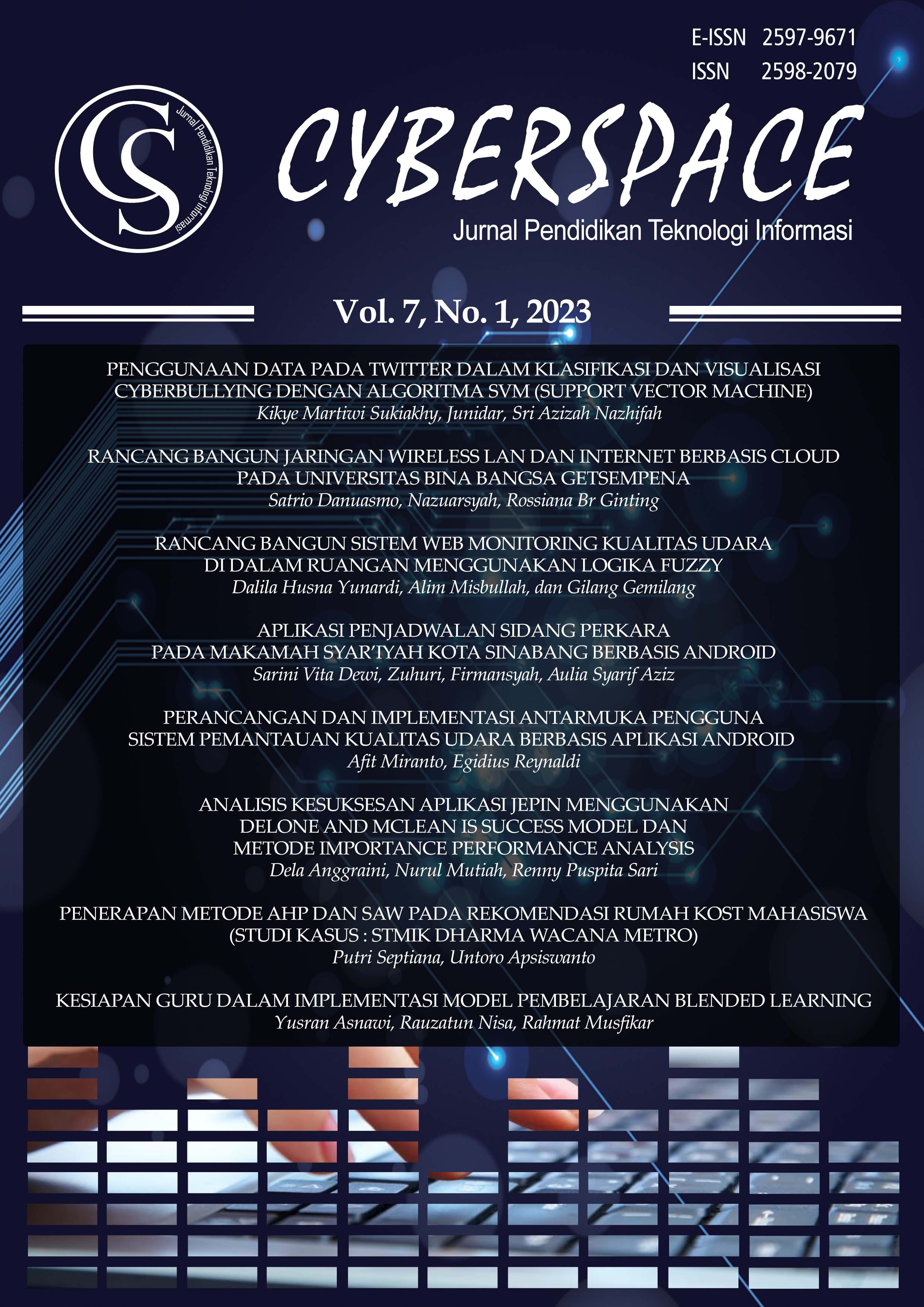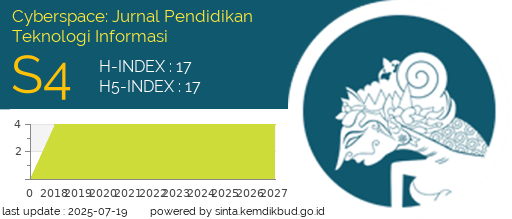ANALISIS KESUKSESAN APLIKASI JEPIN MENGGUNAKAN DELONE AND MCLEAN IS SUCCESS MODEL DAN METODE IMPORTANCE PERFORMANCE ANALYSIS
DOI:
https://doi.org/10.22373/cj.v7i1.17088Keywords:
Delone and Mclean IS Success Model, Importance Performance Analysis, SEM, Jepin AppsAbstract
Abstrak
Adanya Instruksi Presiden No.3 tahun 2003 mengenai kebijakan dan strategi nasional pengembangan teknologi informasi di pemerintahan atau e-government, mewajibkan Pemerintah Kota Pontianak turut serta dalam mengembangkan aplikasi pemerintahan dan pelayanan publik, salah satunya Aplikasi JePin. Namun hingga saat ini belum diketahui apakah aplikasi Jepin telah sukses diterapkan dan apa saja yang dapat mempengaruhi kesuksesannya. Delone and Mclean IS Success Model merupakan model pengukuran kesuksesan sistem informasi dan Importance Performance Analysis merupakan model pengukuran kepuasan pengguna berdasarkan kesesuaian antara kepentingan dan penilaian kinerja, serta untuk mengetahui prioritas perbaikan pada Aplikasi JePin. Adapun dari penelitian yang dilakukan dengan menggunakan pendekatan Delone and Mclean IS Succes Model dan analisis data menggunakan SEM berbasis PLS menunjukan bahwa dari 26 pernyataan yang ada terdapat 2 pernyataan yang tidak valid karena memiliki nilai loading factor yaitu 0.7. Selain itu dari 7 hipotesis yang dibentuk terdapat 6 hipotesis yang diterima yaitu H1, H2, H3, H4, H5, H7 dan hipotesis yang ditolak adalah H6 yang menunjukan hubungan antara variabel Service Quality (LQ) dan variabel Citizen Satisfaction (CS), dimana hasil uji t-test H6 memiliki nilai <1.96 sehingga dinyatakan tidak signifikan. Sementara itu, hasil akhir analisis IPA menunjukan secara keseluruhan bahwa Aplikasi JePin belum memenuhi harapan pengguna karena tingkat kesesuaian hanya mencapai 99.3% atau kurang dari 100%, sehingga diperlukan perbaikan dengan melihat pada analisis kuadran dimana prioritas utama perbaikan tertuju pada indikator Efficiency, Responsive, Reliability, Well-Informedness, Overall Satisfaction, dan Act in Citizen Interest.
References
M. Sarstedt, C. M. Ringle, and J. F. Hair, “Partial Least Squares Structural Equation Modeling,” in Handbook of Market Research, Cham: Springer International Publishing, 2017, pp. 1–40.
O. Agbabiaka and R. Ugaddan, “The public value creation of eGovernment: A test of the respecified is success model,” in Proceedings of the Annual Hawaii International Conference on System Sciences, Mar. 2016, vol. 2016-March, pp. 2923–2932.
H. Syahputra, A. Ramadhanu, and R. B. Putra, “PENERAPAN METODE IMPORTANCE PERFORMANCE ANALYSIS (IPA) UNTUK MENGUKUR KUALITAS SISTEM INFORMASI ULANGAN HARIAN,” vol. 1, no. 4, 2020.
W. H. DeLone and E. R. McLean, “Information Systems Success Measurement,” Foundations and Trends® in Information Systems, vol. 2, no. 1, pp. 1–116, 2016.
M. Scott, W. Delone, and W. Golden, “Measuring eGovernment success: A public value approach,” European Journal of Information Systems, vol. 25, no. 3, pp. 187–208, May 2016.
J. E. Collier, “Applied structural equation modeling using amos: Basic to advanced techniques,” Applied Structural Equation Modeling using AMOS: Basic to Advanced Techniques, pp. 1–354, Jan. 2020.
David Garson, “PARTIAL LEAST SQUARES (PLS-SEM) 2016 Edition,” 2016. [Online]. Available: www.statisticalassociates.com
G. Sterrenberg and B. Keating, “Measuring IS success of e-government: A case study of the disability sector in Australia,” ACIS 2016 Proceedings, Jan. 2016, Accessed: Feb. 01, 2023. [Online]. Available: https://aisel.aisnet.org/acis2016/75
K. S. Wahyuni, M. Chandra Saputra, and A. D. Herlambang, “Evaluasi Pemanfaatan Aplikasi Pelaporan Orang Asing (APOA) Menggunakan Model Kesuksesan DeLone and McLean dan Importance Performance Analysis (IPA) (Studi Kasus : Kantor Imigrasi Kelas I Kota Malang),” 2019. [Online]. Available: http://j-ptiik.ub.ac.id
Downloads
Additional Files
Published
Issue
Section
License
Authors who publish with Cyberspace Journal agree to the following terms:
- Authors retain copyright and grant the journal right of first publication with the work simultaneously licensed under a Creative Commons Attribution License that allows others to share the work with an acknowledgement of the work's authorship and initial publication in this journal.
- Authors are able to enter into separate, additional contractual arrangements for the non-exclusive distribution of the journal's published version of the work (e.g., post it to an institutional repository or publish it in a book), with an acknowledgement of its initial publication in this journal.
- Authors are permitted and encouraged to post their work online (e.g., in institutional repositories or on their website) prior to and during the submission process, as it can lead to productive exchanges, as well as earlier and greater citation of published work (See The Effect of Open Access).



















